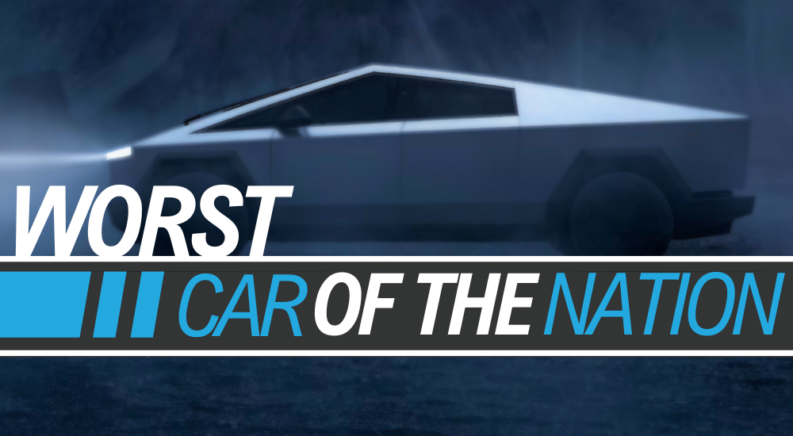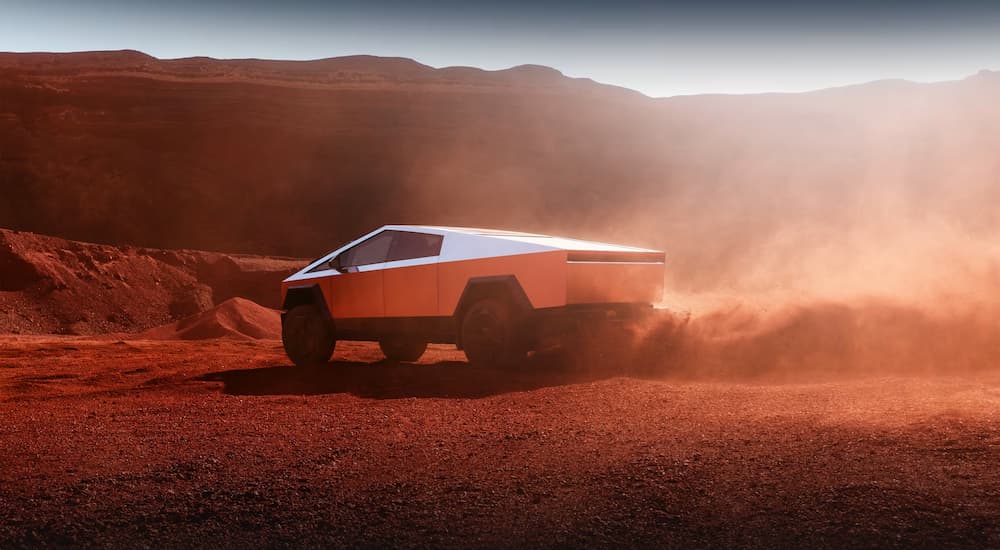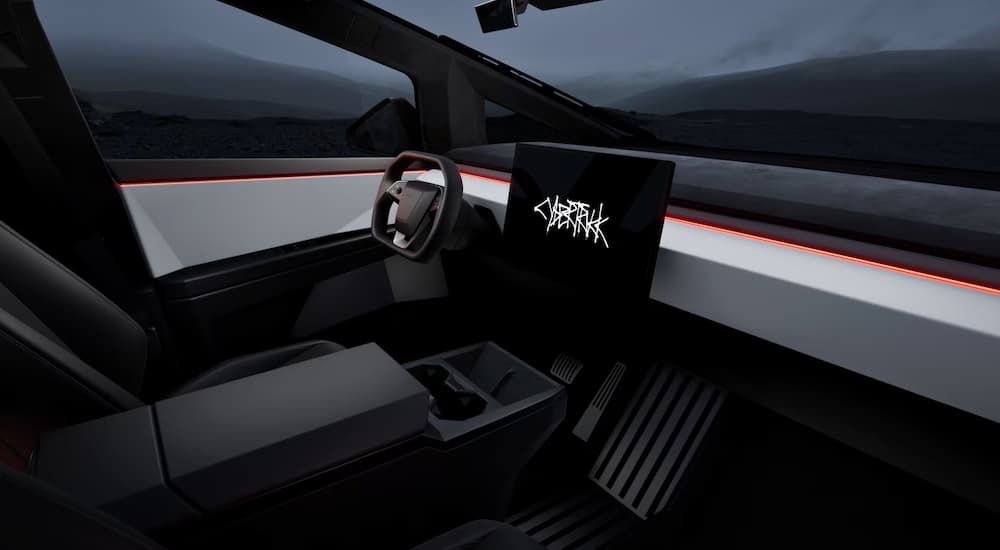A wise man once said, “In many ways, the work of a critic is easy… We thrive on negative criticism, which is fun to write and to read,” and he wasn’t wrong. Negative criticism is fun to write, and seeing someone taken down a peg—particularly when they deserve it—is fun to read, but that doesn’t change the fact that it’s also important. Journalism and criticism alike serve to inform; when you read a car review or a blog post telling you about a vehicle, you deserve to gain useful information that enhances your understanding of it.
All of this is to say that I’m not just going to take potshots at the Tesla Cybertruck, as easy as that would be; I’m not going to rag on its garish appearance (other than when mandatory) because aesthetics are wholly subjective, and even though I think it looks like a truck that just drove out of a Nintendo 64-era video game or that, if you saw it in a modern PC game, you’d probably think you need a new video card, I know some people like it. Ugliness is not reason enough for something to be the worst vehicle of the year. So, instead, I’m going to go over the myriad problems faced by the Cybertruck and its unfortunate owners (though—let’s be honest—they did this to themselves) to see where we end up.
A Rough Reveal
I can’t, in good conscience, talk about the Cybertruck without at least briefly mentioning where this mess all started: its reveal. Tesla first unveiled the Cybertruck about five years ago, in November 2019, at an event that will be long-remembered by anyone with even a passing interest in the auto industry.
The initial reactions were divided, to say the least, and demonstrations of its “bulletproof” windows included showcasing two of those windows fracturing beautifully into scintillating spider webs. At that time, Elon Musk also announced the Cybertruck would be available in late 2021 (giving Tesla a two-year lead time to get the Cybertruck done) with a starting price of $39,900 MSRP. That seems reasonable enough, right? I’m sure they were easily able to hit both of those targets…
What Happened to the Price?
Just kidding! Tesla famously missed that 2021 mark and pushed the delivery date for the first Cybertruck models to early the next year. To be completely fair, though, there was that whole massive life-changing pandemic thing in 2020 that had a massive impact on the auto industry, so it’s not entirely Tesla’s fault. But then they failed to hit their 2022 release, delaying things to later that year, then missed that one and pushed it to 2023—and they missed that date, too. Customers didn’t start getting their Cybertrucks until the start of this year. That’s a significant difference from when it was announced.
But even worse than the delays, which I understand can happen in a major project, is that the starting price ended up feeling like a bait and switch. The actual starting price for the Cybertruck ended up being $60,990, which you can easily see is more than a $20,000 difference! The reason it wasn’t some kind of false advertising, though, is that the original price was going to be for a single-motor model, whereas the current starting price is for a dual-motor version of the Cybertruck. There’s simply no single-motor option available (yet), so it’s not a bait and switch—just an utter failure to deliver. Still, it must feel bad for anyone interested in what would be a fairly accessible price point for an all-electric truck.
What’s a Recall Among Friends?
Recalls for Tesla vehicles are a touchy subject. Many people like to point out that Tesla has a high number of recalls, but Tesla fans counter that most of them are handled with a simple over-the-air update to fix something that might just go ignored if it was a problem for a vehicle from another brand. Both are valid points, but that doesn’t change the fact that the Cybertruck has already been hit with a pretty high number in its first year.
There have been four recalls so far for the Cybertruck, and the year’s not even over yet. In fairness, two of these recalls were fixed with an over-the-air update, which is great; on the other hand, the other two required physical work on the vehicle, and one of them affected every Cybertruck that was on the road. That was a big one, too, as it involved accelerator pedals that could become stuck, causing the vehicle to accelerate out of control—certainly not a minor issue. The recall was performed, and the issue was resolved, but that’s still not a good look for Tesla.
Don’t Get it Wet (Or Feed It After Midnight)
One of the funniest issues for the Cybertruck (as someone who doesn’t own one) is that numerous owners reported rust and corrosion developing within a very short period after getting it wet. The stainless steel body of the Cybertruck is one of its major selling points—and arguably its biggest aesthetic feature—but it’s also prone to surface contamination and discoloration that can look a lot like rust. It won’t likely cause structural issues, but buying a six-figure truck that can’t be exposed to rain is certainly an interesting choice.
Mystery Errors and Losing the Will to Live
There have been numerous reports from a wide range of owners that the Cybertruck will display all kinds of different system errors and messages while driving. Some customers have had these messages come up after only a few miles of driving and had to immediately return their trucks for servicing. These include critical steering issues, loss of power, and error messages about traction and stability controls.
These aren’t just visual display errors—they cause the Cybertruck to stop functioning. Edmunds, one of the most well-known automotive websites in the industry, had their test truck fail twice in just a couple of weeks with error messages about critical steering issues. When the journalists trying to test and write about your truck can’t do so, you’re in trouble.
Build Problems: The Sign of a True Tesla
Build quality has been an increasing issue for Tesla in recent years, and the Cybertruck seems to be just another example of that. Panel gapping is generally seen as the largest problem, with visible gaps clearly caused by fast or sloppy assembly. The stainless steel design only exacerbates this because the metal panels often look out of place if the “grain” of the metal doesn’t match well from one panel to another. When you have gaps, trimming issues, and other problems all stacked together, you get cosmetic flaws that go beyond the subjective.
Watch Your Fingers (And Other Body Parts)
Showcasing a true lack of foresight, Tesla seems to have forgotten anti-pinch sensors for the frunk (front trunk) of the Cybertruck. The result is that it will close no matter what might be in the way, including any and all body parts. There have been numerous demonstrations of this on the internet using things like carrots, but I’ve seen a few dedicated scholars stick their fingers in there, and the results are ugly. Apparently, the doors can also do some damage, and more than one person has reported being seriously cut (needing stitches) by the sharp edges of the metal door panels. I’m not an automotive engineer, but I don’t think vehicles ought to assail their owners.
Is It Worth It to Be So Different?
So here we are—numerous delays, a higher starting price than promised, multiple recalls in a year, serious system errors, an exterior that can’t get wet, and doors that might try to take your fingers off. Add in messy production that results in excessive panel gaps and other poor finishing, and you get what I’d safely call the worst vehicle of the year—even more so, given its price.
I know I’m not going to persuade Tesla fans to abandon the Cybertruck, and that’s fine—live your lives—but that doesn’t change the fact that this monstrosity is flawed, rushed, overpromised, and under-delivered. I’d rather stick with a truck that will work well when it gets wet, with proper off-road capabilities, and that won’t decide to hard-brake on its own at random moments on the freeway. Call me old-fashioned.






